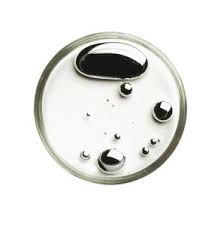
- +86-13363869198
- weimiaohb@126.com

Jul . 25, 2024 22:28 Back to list
Exploring the Chemical Structure and Properties of Curcumin for Enhanced Health Benefits
Curcumin Exploring Its Chemical Structure and Significance
Curcumin, the vibrant yellow compound derived from the rhizome of the turmeric plant (Curcuma longa), has captivated the scientific community for its remarkable therapeutic properties and potential health benefits. Its chemical structure plays a pivotal role in mediating these effects, making it essential to understand the intricacies of this molecule.
The chemical structure of curcumin is characterized by its distinctive polyphenolic structure, which consists of two aromatic rings connected by a seven-carbon linker with an α,β-unsaturatedβ-diketone system. This unique arrangement is responsible for many of its biological activities, including its antioxidant, anti-inflammatory, and anticancer properties.
Curcumin Exploring Its Chemical Structure and Significance
One of the most crucial aspects of curcumin’s chemical structure is its ability to chelate metal ions. This property enables curcumin to bind with transition metals, such as iron and copper, which can help in modulating oxidative stress and potentially reducing the risk of neurodegenerative diseases, such as Alzheimer’s disease. By stabilizing these metal ions, curcumin reduces their availability in catalyzing harmful oxidative reactions in biological systems.
curcumin chemical structure

Curcumin's polyphenolic structure also facilitates its interaction with a variety of cellular enzymes and receptors. For instance, it can inhibit specific phosphokinases, cyclooxygenase enzymes, and nuclear factor kappa B (NF-kB) pathways, which are pivotal in the inflammatory response. This inhibition underscores curcumin's potential as a therapeutic agent in managing chronic inflammatory conditions, including arthritis and cardiovascular diseases.
Moreover, curcumin has shown promising results in cancer research. Its chemical structure allows it to interfere with multiple signaling pathways involved in cancer progression, including the downregulation of genes responsible for cell proliferation and the upregulation of apoptotic mechanisms, promoting cancer cell death. This polypharmacological nature of curcumin makes it a compound of great interest in developing novel anticancer therapies.
Despite its numerous benefits, curcumin’s clinical application has been hindered by its poor bioavailability. The compound is rapidly metabolized and eliminated from the body, limiting its therapeutic potential. Researchers have been exploring various strategies to enhance its bioavailability, including the development of novel formulations, such as nanoparticles, liposomes, and the use of adjuvants like piperine, which can significantly improve absorption.
In conclusion, the chemical structure of curcumin not only contributes to its diverse biological effects but also presents challenges in its therapeutic application. As research continues to unveil the benefits of curcumin, understanding its structure will be critical in the design of effective delivery systems and the establishment of curcumin as a viable pharmacological agent. Given its rich history in traditional medicine and growing relevance in modern therapeutic contexts, curcumin remains a compound of immense scientific and clinical interest, promising a multitude of health benefits for the future.
-
Top CAS: 79099-07-3 Factories & Wholesale Supplier from China
NewsJul.30,2025
-
High-Quality GS-441524 for White Liquid Type Factories & Suppliers
NewsJul.29,2025
-
High-Quality Pharmaceutical Intermediates for Sale – Reliable Supply
NewsJul.29,2025
-
High-Quality Pharmaceutical Intermediates for Sale - Reliable Solutions
NewsJul.29,2025
-
High-Quality Pharmaceutical Intermediates Supplier for Global Market
NewsJul.28,2025
-
GS-441524 for White Liquid Type Factories – High Purity & Reliable Supply
NewsJul.28,2025